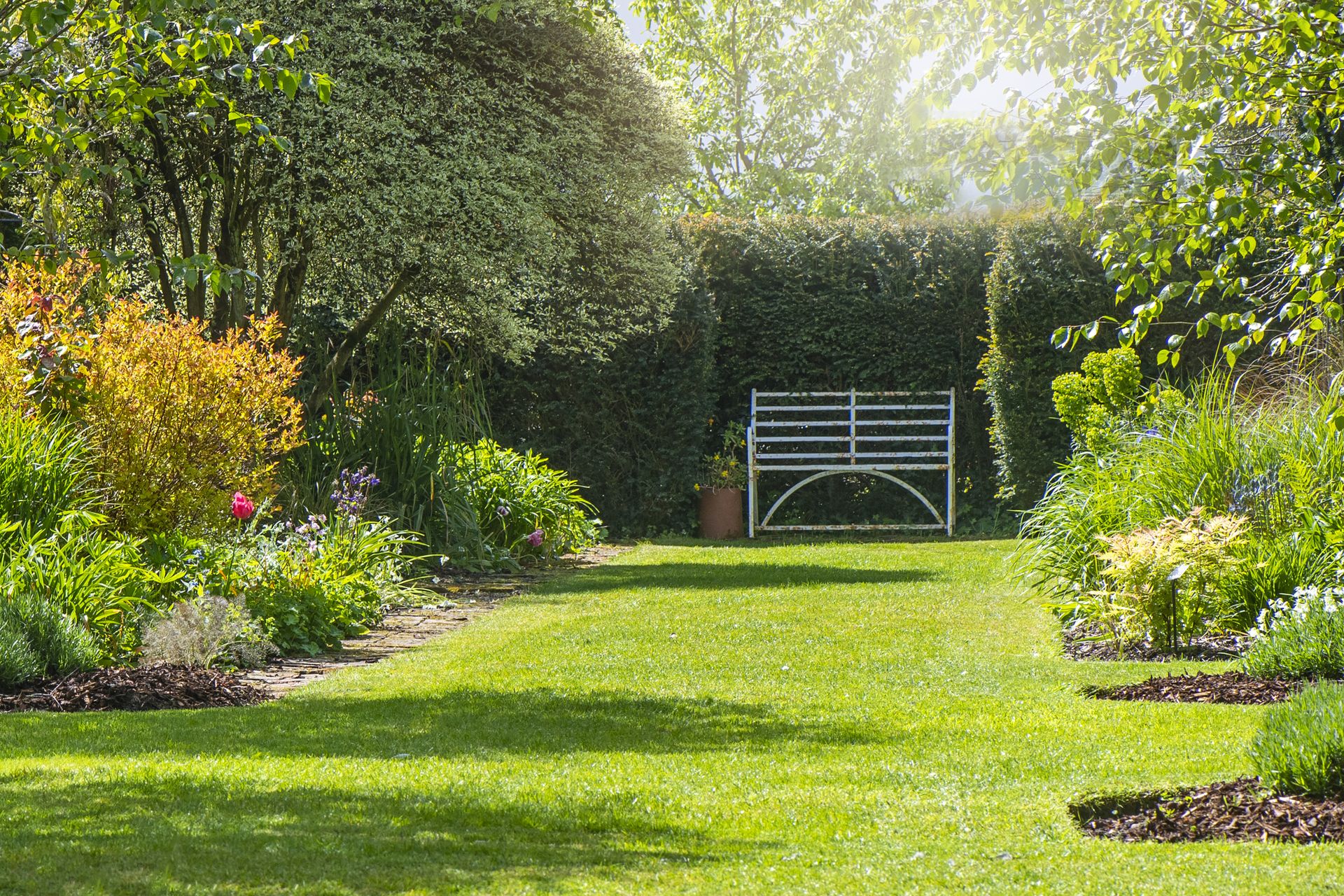When to plant grass seed – for the perfect lawn
Discover when to plant grass seed for a lush, verdant lawn in less than two months
- (opens in new tab)
- (opens in new tab)
- (opens in new tab)
- Sign up to our newsletter Newsletter


Knowing when to plant grass seed is important if you want to grow a healthy lawn.
Having lush, green grass is integral to most people’s garden ideas, but whether you are after how to plant grass seed from scratch, or trying to fill in patchy areas to make a lawn green and thick, you need to time it just right.
‘With the rise in prices of grass seed over recent years, it is critical to maximize your success when timing planting,’ says Adam Gore, horticulture agent for Clemson University Cooperative Extension (opens in new tab).
‘This means it is vitally important to seed a lawn during optimum growing conditions. Doing so will reduce the risk of disease development, poor seed germination and seedling failure.’
If you’re in a hurry to get your new lawn off to a good start, then choose from the best fast-growing grass seed, and finish it off with one of the most stylish lawn edging ideas.

When to plant grass seed – what to consider
When to plant grass seed depends on several factors: soil temperatures, the expected weather forecast, grass species selection and location.
Your local climate is a particular factor if you want to minimise the risk of seedling-related diseases. Gardeners in the warmer south may find they can plant their seed earlier than those in cooler northern areas. However, the type of grass also plays a part.
‘Just as every person has a difference in temperature preference so too do grass species,’ says Gore.
‘Warm-season grasses – such as Bermuda grass, zoysia grass and centipede grass – prefer to have soil temperatures at or above 65°F (18°C) for best germination, whereas cool-season grasses – such as tall fescue and ryegrass – prefer soil temperatures below 65°F (18°C).
‘Just as crucial is the weather that follows. Any seedling requires conditions that favor their germination and growth. Exposing a plant to the extremes of harsh summers or winters can lead to eventual failure of the grass due to the plants not having the proper amount of time to establish.’
When is the best time to plant grass seed?
The best time to plant grass seed depends on the type of grass you are growing.
‘It’s generally best to plant cool-season grass seed in early fall and warm-season grass seed in late spring,’ advises Jeremy Yamaguchi, CEO of Lawn Love (opens in new tab).
‘While you can technically plant it any time of the year, these specific times have the best ground moisture and highest likelihood of precipitation while the weather is still mild to warm. These are the most optimal conditions for grass seed and will yield the most desired results.

When to plant grass seed in spring
Warm-season grasses should be planted in the spring for the best chance of success.
‘These grasses need time to establish an acceptable root system before dealing with the extreme temperatures that may come with summer or winter,’ says Gore.
‘Planting in mid-to-late spring allows these seedlings the most hospitable environment that encourages growth prior to any of these environmental stresses.’
Meanwhile, cool-season grasses can be planted in the late winter to early spring. ‘Though an early spring window may experience greater risks as planting at this time may not allow sufficient plant maturity before summer stress occurs,’ adds Gore.
When to plant grass seed in the fall
Cool-season grasses are best planted in the early fall, allowing them plenty of time to establish before the following spring.
‘Cool-season grasses develop deep root systems that can allow them to survive the cold winter months,’ says Erinn Witz, co-founder of Seeds & Spades (opens in new tab).
‘Plant the seeds when temperatures are between 50-65°F (10-18°C).'
Can you plant grass seed in the winter?
While technically you can plant grass seed in the winter, it’s best to wait until the spring for warm-season grasses.
Cool-season grasses can usually be planted successfully in late winter, which may be preferable until waiting until the fall.
Although it's possible for grass seed to grow after a frost, young seedlings can be permanently damaged by the effects of the cold, so do bear this in mind if you're considering planting or repairing your lawn in the colder months.
How long does grass seed take to grow?
As long as you have planted your grass seed at the right time, it should be quick to establish.
‘Expect to see new growth appearing between 5-30 days after planting. It should take around 30 days to get established and two months to be ready for mowing,’ says Witz.
‘Don’t mow your new grass until it’s at least 3 inches (8cm) tall, and use the highest mower deck setting to avoid taking off too much grass at once.’
Tips for planting grass seed
- Thorough preparation is key to successful grass seed planting. ‘Testing your soil for nutrient levels is an often-overlooked but crucial step in getting healthy new grass to grow,' says Witz. 'If your test shows any significant nutrient deficiencies, correct them before planting.' This could involve adding a liming product or nutrients via fertilization.
- Prepare the ground to be planted by removing stones and debris, and raking over the area to ensure it is as even and finely textured as possible.
- ‘Use a handheld or broadcast spreader to apply your seed and use a lawn-starter fertilizer to supply a nutrient boost,’ says Witz.
- ‘Immediately after seeding, the area should be lightly raked, top dress, rolled or drugged over with a mat or similar device, to ideally encourage what is referred to as “seed-to-soil” contact,’ adds Gore.
- Consider laying straw or hay over the area afterward to prevent the loss of seed from birds and washouts from rain.
- Water lightly everyday until your seeds germinate, then water less frequently but more deeply for the next few weeks.

As editor of Period Living, Britain's best-selling period homes magazine, Melanie loves the charm of older properties. I live in a rural village just outside the Cotswolds in England, so am lucky to be surrounded by beautiful homes and countryside, where I enjoy exploring. Having worked in the industry for almost two decades, Melanie is interested in all aspects of homes and gardens. Her previous roles include working on Real Homes and Homebuilding & Renovating, and she has also contributed to Gardening Etc. She has an English degree and has also studied interior design. Melanie frequently writes for Homes & Gardens about property restoration and gardening.
-
-
 Robert Pattinson just bought a Spanish Colonial-style home – with an interior designer past
Robert Pattinson just bought a Spanish Colonial-style home – with an interior designer past'The Batman's' Robert Pattinson and Suki Waterhouse purchased the Jeff Lewis-designed Hollywood Hills estate for $5.3 million
By Megan Slack • Published
-
 7 expert-approved methods to remove candle wax from carpet
7 expert-approved methods to remove candle wax from carpetCleaning professionals share their tips on how to remove candle wax from carpet
By Millie Hurst • Published

